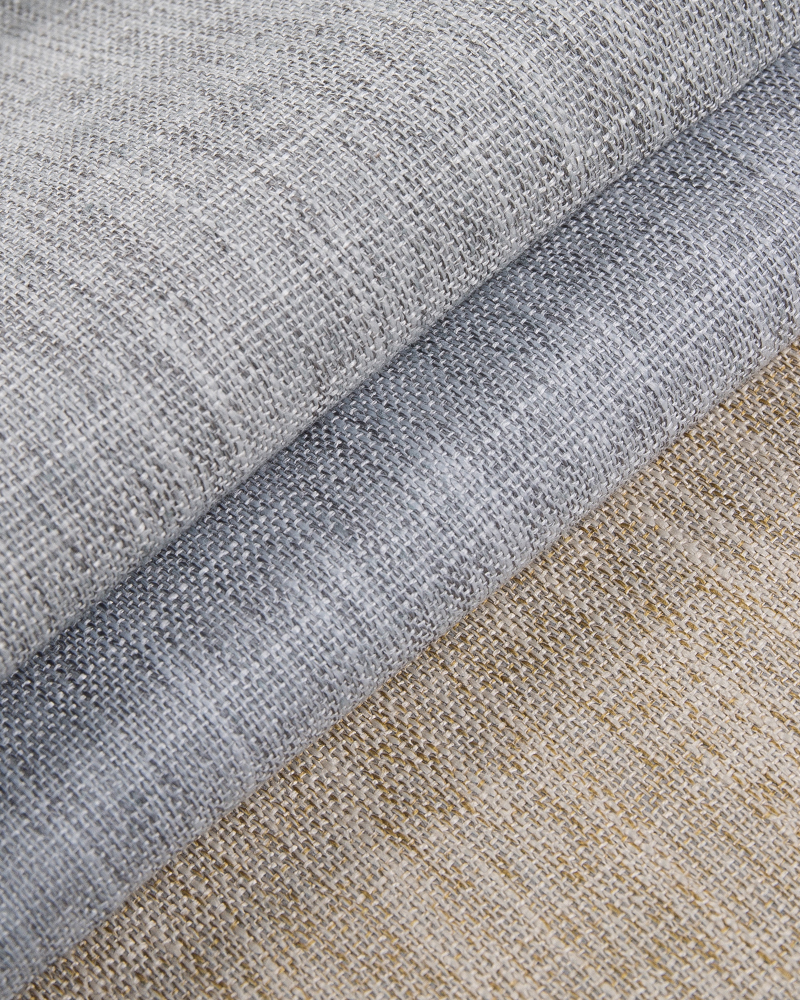
The balance between breathability and light-shielding performance of cotton linen curtains fabric is an important issue that many consumers will consider when purchasing, because it directly affects the comfort, functionality and overall indoor environment of the curtains. Cotton and linen fabrics have good breathability due to their natural fiber composition, but their light-shielding performance is usually weak. Therefore, how to improve the light-shielding effect while maintaining breathability has become a challenge for many families and commercial places.
The breathability of cotton and linen fabrics mainly comes from their natural fiber structure, especially hemp fiber (flax) has good breathability and moisture absorption. It is specifically manifested in the following aspects:
The fiber structure of cotton and linen fabrics allows air to circulate freely, keeping the indoor air fresh, which is particularly suitable for environments that require good ventilation, such as living rooms and restaurants.
Cotton and linen fabrics can absorb and discharge moisture well, and are suitable for use in environments with high humidity (such as the seaside or rainy areas), helping to maintain indoor dryness and comfort.
Although cotton and linen fabrics have many advantages, they are usually not comparable to heavy synthetic fibers (such as polyester and nylon) in terms of light-shielding performance. The main reasons include:
Most cotton and linen fabrics are woven in a looser way, which makes it easy for light to penetrate the fabric into the room. In particular, the light-weight cotton and linen curtains have a weaker light-blocking effect.
Light-colored cotton and linen fabrics (such as white, beige, etc.) are usually more light-transmitting, so the light-blocking effect is poor. Even darker cotton and linen fabrics still cannot completely block the penetration of sunlight or strong light.
In order to enhance the light-blocking effect while maintaining good breathability, the following methods can be adopted:
Thicker cotton and linen fabrics have better light-blocking properties than thin fabrics, so slightly thicker cotton and linen curtains can be selected to enhance their light-blocking effect without losing breathability.

Using double or multiple layers of cotton and linen fabrics (for example, two layers in front and back or a middle layer) can effectively increase the light-blocking effect. The inner layer can choose a denser cotton and linen fabric, while the outer layer still maintains a material with better breathability, which can provide a certain light-blocking effect and ensure air circulation.
Many businesses offer blackout linings, which can be used in conjunction with cotton and linen curtain fabrics. Blackout linings are usually made of synthetic fiber materials such as polyester and polyester, which can effectively block light, thereby improving the overall light-blocking performance of the curtain.
Blackout linings are usually removable, and the light transmittance of the curtain can be adjusted as needed. For example, you can leave the blackout lining out during the day to keep natural light in, and add the blackout lining at night or when privacy is needed.
Choosing cotton and linen fabrics in dark or neutral colors (such as dark gray, navy blue, dark green, etc.) can increase the light-blocking effect of the curtain. Dark fabrics can effectively absorb and block light, reducing the ability of sunlight to penetrate.
Some cotton and linen fabrics with complex patterns may appear less transparent visually because the pattern breaks up the direct penetration of light. However, it should be noted that this does not mean that the light-blocking performance is greatly enhanced, but only a visual "blocking" effect.
Another effective way to balance breathability and light-blocking performance is to use a double-layer curtain system. The outer layer can be made of light and breathable cotton and linen fabric, while the inner layer can be made of blackout fabric or thicker cotton and linen fabric. Double-layer curtains can adjust light and air circulation as needed, which is very suitable for rooms such as living rooms and bedrooms that require different light intensities.
For example, you can choose to divide the curtains into two layers: the outer layer uses light and breathable cotton and linen fabric, and the inner layer chooses heavy blackout fabric. This combination can provide good air permeability during the day and provide the required blackout effect at night or when the sun is strong.
Each method has its applicable scenarios. According to the needs of different rooms (such as bedrooms, living rooms, study rooms, etc.), the selection and configuration of fabrics can be flexibly adjusted to achieve a curtain effect that can maintain air permeability and meet the blackout requirements.